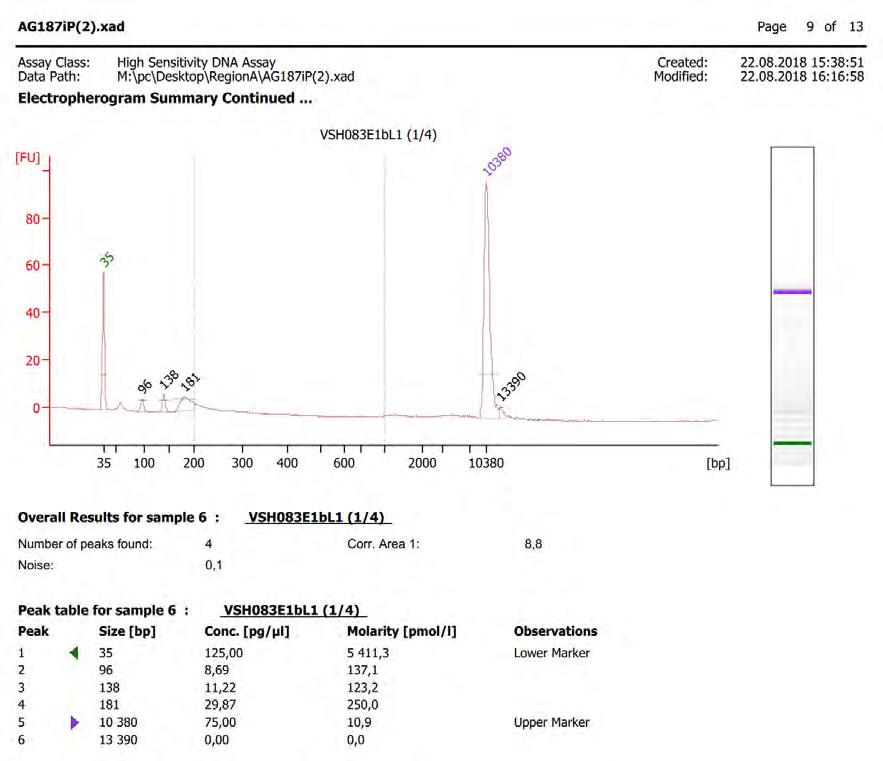
1 minute read
Discussion
amplify the sample to get a mitochondrial genome but there is very little geographical or temporal
structure in the mitochondrial genomes of European sheep (Hiendleder, Lewalski, Wassmuth, &
Janke, 1998; Niemi et al., 2013; Rannamäe et al., 2016; Tapio, 2006) so this would yield very little
information. Therefore, it was decided not to process the sample further at this time.
Figure 18: Results from Bioanalyzer 2100 (Agilent) for sample VSH083. The sample had little DNA and was therefore not selected for screening.
This small sample of the archaeofauna from the Follobanen excavation is very interesting. The
number of goat skulls was rather unexpected but would make sense as goats seem to have been
preferred to sheep in urban areas as they can be milked for much longer periods of time and have
more omnivorous diets than sheep and their horns and skins were popular raw material for craft
working (e.g. Lie, 1988; Noddle, 1994; Salvagno & Albarella, 2019). The butchery patterns observed
are also interesting and certainly show that there is lot of interesting information to be found in the
archaeofauna from the site with traditional zooarchaeological analysis.




